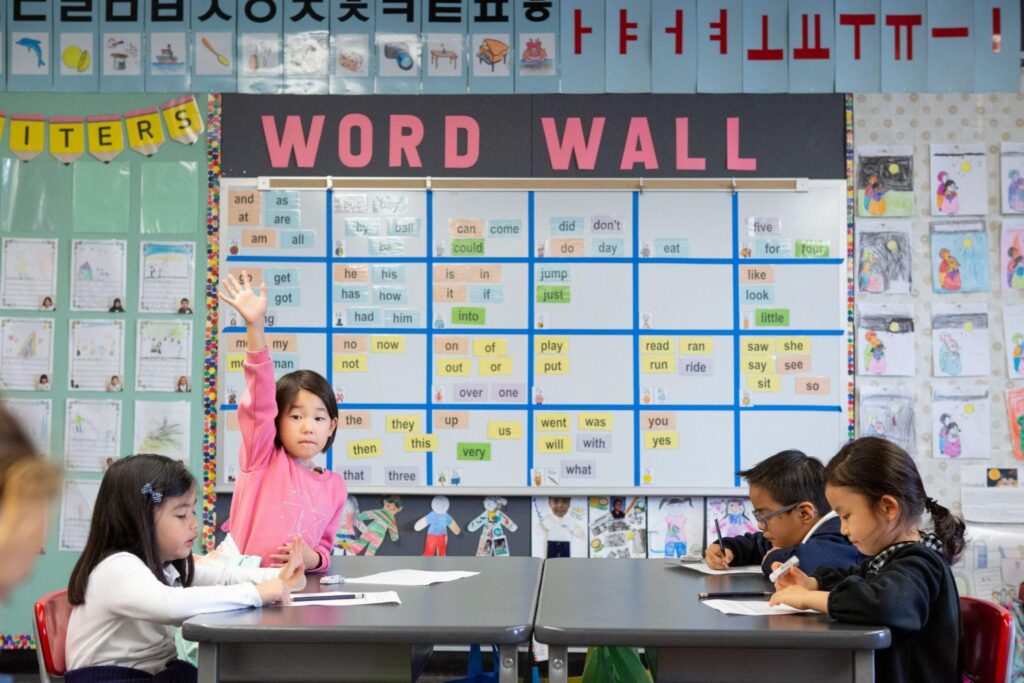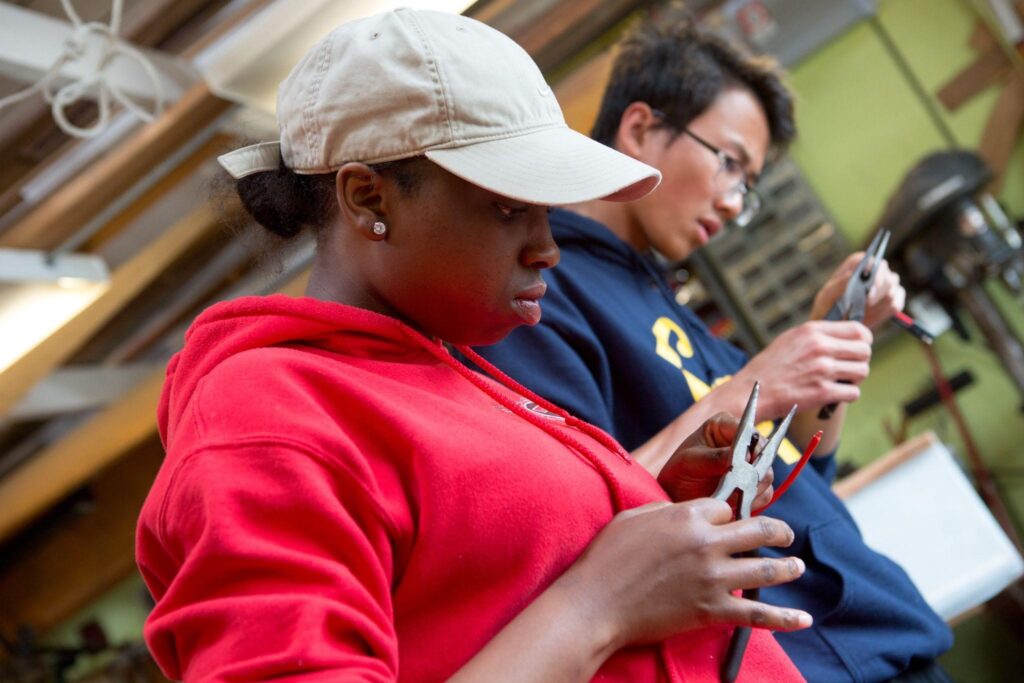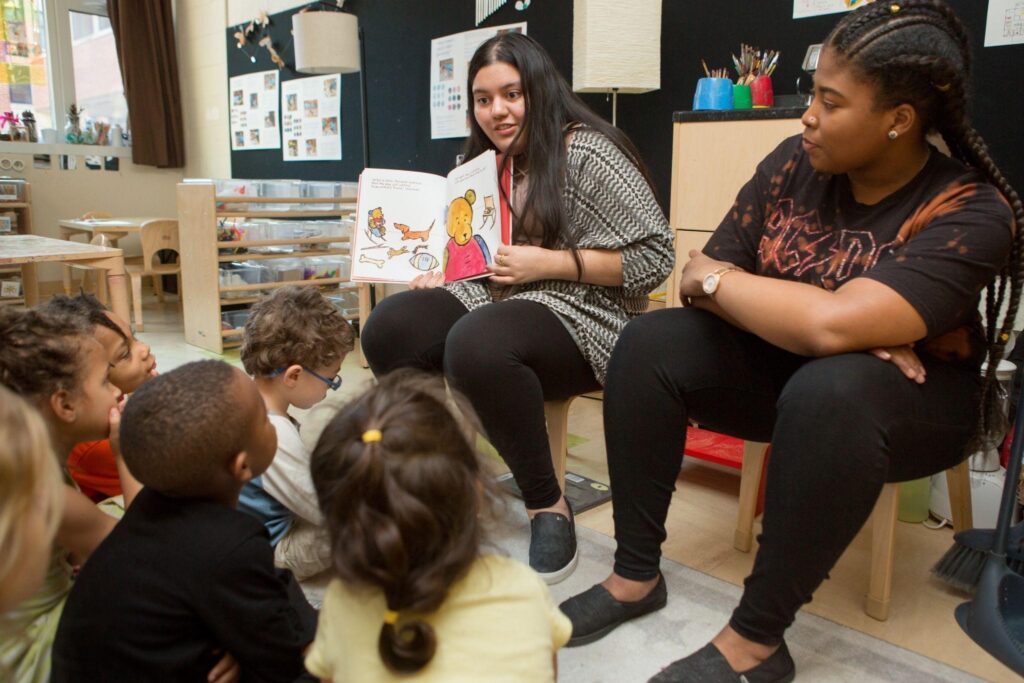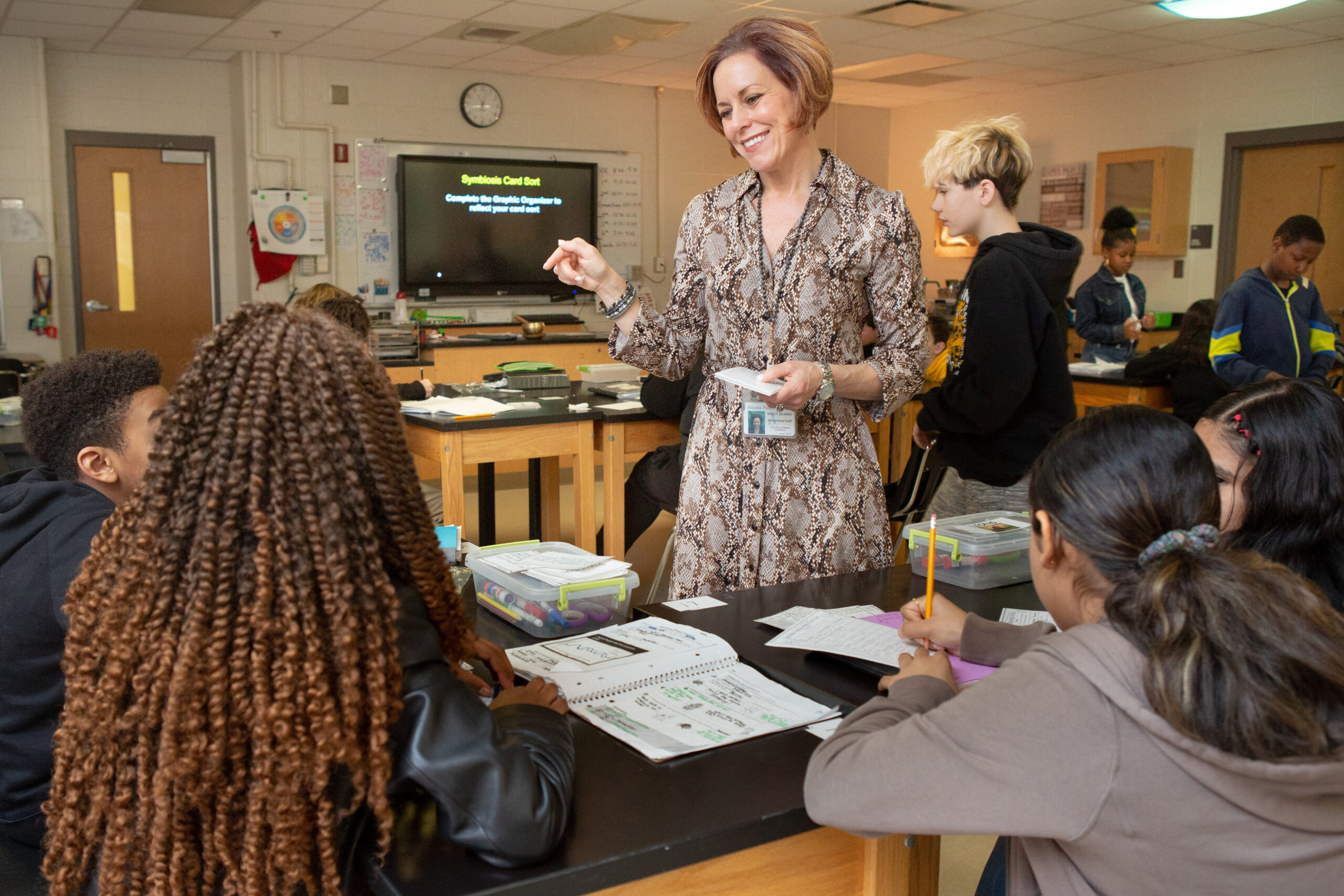Five New Tools From The AI LEVI Lab
Project Toni
School Comparison Tool
Student Portfolio Assessment Tool
Early Literacy Tool
Rori Math Hint Generation Chatbot
There’s no question that large language models like ChatGPT and Bard will have far reaching impact. ChatGPT, already has millions of users. But so far, not nearly enough has been done to leverage the latest developments in AI to support teachers and students.
To address this issue, the Learning Engineering Virtual Institute (LEVI) created an AI Lab to help develop new ChatGPT-based tools. LEVI is supported by the Walton Family Foundation, and through an extensive collaboration with educators, students, and parents, the AI Lab developed five pilot tools that address critical issues in education.

Created by a high school teacher in New York City, this tool gives individualized advice and feedback on student writing assignments. The tool gives feedback to students that helps to develop the coherence, tone, and effectiveness of their writing.
Creating A ‘Pocket Tutor’
When David Levin, Co-Founder of the KIPP Foundation and Array Education, first heard about ChatGPT, he thought it could have a big impact on teaching and learning. But he did not know how much. So working with Adrian Antao, a teacher at a KIPP school in the Bronx, Levin started tinkering with the tool. Eventually the pair teamed up with PlayLab, a platform that allows educators to build their own AI-powered tools, and they created Project Toni – a formative feedback tool designed to elevate students analytic writing skills.
Adrian Antao regularly uses technology with his students trying different approaches. Sometimes the students use the tool in class. Other times, they are encouraged to use it at home.

“Each week is a new experiment,” Antao said.
Learn more about the development team
The Right Feedback, At The Right Time
For students, this sort of feedback is important because they often don’t get enough of it. Due to the extensive time it takes teachers to grade essays and large class sizes, many students will only write a few long form essays each year.A tool that can help students self-critique and learn allows students to maximize their development. Antao has found that the feedback tool can thoughtfully address baseline issues such as framing, flow, and argumentation. This early feedback allows students and teachers to focus more on in-depth writing development such as how to find and choose the strongest evidence from sources.
If effectively integrated, students will learn more and feel more empowered while teachers can provide more impactful feedback.
“Each time I interact with this tool, I think of the potential this can have for students,” Antao said.
“I call it a ‘pocket tutor,’” said Adrian Antao of KIPP NYC College Prep. “It's an assistant that both of us, student and teacher, can go to for help.”
The School Comparison Tool helps parents find the right school for their child by helping them compare schools across key progress measures such as academic performance, attendance, and other factors.To demonstrate the tool’s abilities, the development team used data from The development team from the Cheltenham School District, which educates more than 4,300, students just outside Philadelphia.
School Choice, Simplified
For most parents, the process of choosing a school for their child is bewildering. How should they compare a school’s performance? What’s the best way to evaluate teacher quality? How should they consider extracurriculars like the arts and sports?
The questions and options can feel endless, especially when the stake seems so high. After all, their child will attend that school system for more than a decade, which could have a profound impact on life outcomes, shaping where – and if – the child goes to college.
But schools and districts don’t typically make the process easy. On state and district websites, there’s often a lot of confusing jargon and bewildering terms like “Percent Four-Year Cohort Graduation,” which is the number of students in a graduating class who earn their diplomas on time.
While some states seek to improve the process using simplified terms and processes like creating school-level report cards, parents often still spend significant time digging into the data, sorting through confusing documents and lengthy tables.
Nor is the data typically accessible in a single place in a way that makes comparisons easy.
Right now, you need to understand the details of a state’s organizational chart to know where to find all the pertinent data,” argues data expert Brennan McMahon Parton.
Helping Parents Navigate Troves of Data
Such impediments matter because school choice matters. Giving parents more autonomy is empowering, and by choosing the best school for their child, parents can better set their child up for success.

Learn more about the development team
What Data Matters?
Experts in school choice such as Jon Deane, CEO of Greatschools, point out that parents often don’t even know how to start the process of choosing a school. Specifically, parents are often bewildered by the large amount of data on schools and which data points will help them make better choices. The School Comparison chatbot includes prebuilt questions to help parents start the school selection process.
Reem Tarazi lives in the Cheltenham district. Her three boys attend the district’s schools. “I’m not a chatbot person so I thought the concept was fascinating,” Tarazi said. “What I liked most about it is that it gives you examples. Having those prompts gave me a chance to consider questions I hadn’t already thought about and make the best use of what the program could potentially offer in making school comparisons.”
Tarazi remembers struggling to find high-quality information on school performance when she and her husband were looking for a new home in the area. Beyond test-scores, they wanted to know about other factors like extracurriculars, sports, and teacher demographics.
The pilot chatbot would have been helpful since it also points out limitations in the information available and when it’s best to contact the school directly about certain programs or initiatives like a robotics program. “I also liked that the tool gave caveats,” Tarazi said. “It doesn’t allow users to go too far.”
Steal The Code. Seriously!
For districts and states eager to support parents, the programming code of this pilot – and all the other pilots – is available on Github. This makes it easy for any school district or state to create chatbots for their schools. Nor is the process of tuning the chatbot difficult. A district could download the data finetune the model and have a chatbot up and running on their website within a day with limited amount of training.
“Making a decision about a school is hard,” Tarazi noted. But it does not need to be that way, and the pilot chatbot shows at least one way forward to help parents find the best school for their child.
The Mastery Transcript Consortium (MTC) team created the Student Portfolio Assessment Tool using the Playlab platform. It aims to help educators identify top durable skills in student assignments to ensure students are prepared for the jobs of the future.
Using AI To Teach ‘Soft Skills’
AI is dramatically changing the nature of work. Jobs with routine elements and tasks a computer can do more easily and accurately than a human are more likely to be condensed or replaced. For instanceS, jobs that involve simple writing and data tasks are likely to disappear, given the advent of ChatGPT.
However AI is not yet able to do much creative or critical thinking, and workers who have mastered these skills remain in high demand. For schools, the implications are clear. More needs to be done to help students build the skills and knowledge that will enable them to succeed in a rapidly changing workplace. This means, for instance, teaching more data science and placing more emphasis on introducing students and parents to the many applications of a data science education. Investing in data literacy programs, STEM education, and critical thinking initiatives is also paramount.

Yet the process of connecting specific skills to certain types of curriculum is not intuitive and can be time-consuming for teachers. It can be hard, for instance, to figure out if a history assignment challenges a student to engage in critical thinking, or if a chemistry class yields opportunities for students to build creativity or collaboration skills that translate to the workforce.
Aligning The Classroom With The Workplace
Mike Flanagan of the Mastery Transcript Consortium, an ETS company,is well aware of this challenge. His group, a cornerstone of Skills for the Future,promotes competency-based learningand helps students demonstrate their value both to employers and college admissions officers. With this mission in mind, Flanagan decided to spin up a tool that would allow teachers to check if their assignments contain the skills needed for success at work.Learn more about the development team
Helping Teachers Create Well-Rounded Lessons
The tool can also identify a “non-match,” helping teachers pinpoint what other assignments should be considered to round out a syllabus to match local curriculum requirements.
Flanagan’s team has been testing out the tool with various institutions and learners and early feedback has been positive. Ryan Hagge, Principal of American Academy of Innovation, in South Jordan, Utah spent some time with the application, noting that it allows “for viable, instant feedback useful for procedural feedback loops.”
And no doubt such instant feedback loops are key for busy teachers who need more support preparing their students for the ever-changing world of work

This tool “makes it easy for teachers and students to connect the dots between assignments and competencies,” said Cory Henwood, a District Innovation Coordinator in Iron County School District in Cedar City, Utah.
The Early Literacy Tool simplifies the process of creating support plans and assists educators in selecting interventions to help with early literacy issues. Drawing from the
Doing What Works Library, the pilot tool supports a comprehensive approach to help students who are falling behind in reading and writing.
Planning The Instructional Approach
To help students with disabilities succeed, teachers and parents need to carefully plan their instructional approach. Creating such a plan is often complex since educators must navigate a vast array of approaches, theories, and resources to find the best fit for each student. What’s more, the process must be both holistic and individualized.

To confront this challenge, the AI LEVI Lab created the Interventions for Early Literacy Tool – —a resource that allows educators, support personnel, and parents to quickly identify resources and teaching methods to support students with disabilities.
Reducing Stress While Pinpointing Interventions
Developed through the wealth of information provided by the U.S. Department of Education’s Doing What Works Clearinghouse, the chatbot is trained to provide recommendations to student support teams to help reduce the time needed to develop an intervention plan without losing the depth of research needed to respond successfully.
Learn more about the development team
The code is available on HuggingFace, making it easy for people to replicate or expand on the tool with other databases.
Like many organizations, NCLD has been exploring ways that AI can support teachers and views the tool as a way to potentially reduce the stress associated with discovering or managing a child’s learning disability.

“Too often, educators, support staff, and parents have to search for evidence-based interventions when supporting students struggling academically,” said Dr. Jacqueline Rodriguez, Chief Executive Officer of the National Center for Learning Disabilities. “The Interventions for Early Literacy chatbot removes the burden on educators and families, while also increasing the likelihood that students have access to appropriate and effective interventions. “We are excited to collaborate in developing this important tool and eager for the potential use of AI in supporting the education of students with disabilities.”
Rori’s Math Hint Generation Chatbot – Providing Hints When Students Struggle
The Rori Math Hint Generation Chatbot aims to boost students’ math problem-solving skills. This pilot tool, focused on algebra and pre-algebra, provides feedback on incorrect answers by identifying mistakes and providing constructive hints. The ultimate goal is full integration with online math assignments, ensuring constant student support.
Bringing Tutoring To Every Child
Tutoring is one of the most effective interventions in education and has been shown to dramatically increase test scores. But tutoring is expensive and often costs schools more than $1,000 a student. Tutoring is also hard to scale since it’s people-intensive.
With this in mind, Rising Academies, an edtech group based in Africa, alongside the Digital Harbor Foundation, sought to provide every student with access to a computer with a free virtual math tutor. Called Rori, the tool uses conversational AI to address student learning loss in West Africa due to conflict, particularly around middle school math. This type of approach can show success.
Learn more about the development team
If the students get the problem wrong, they can then receive hints on how to solve it based on their incorrect answer. This personalized approach ensures that students not only understand their errors but also receive targeted assistance in overcoming conceptual challenges.
Looking ahead, the Rori team aims to use a version of this tool within their platform. Furthermore, the code behind the tool could be fully integrated into online math assignments – ensuring that students have access to valuable hints whenever they are needed. By guiding students to figure out the correct answer – rather than simply telling them they were wrong – students learn where they misunderstood concepts and can identify where they need further help.
Boosting Confidence and Engagement
This tool’s design not only increases student engagement and confidence in math but it also helps students maximize classroom time with their teachers because they can more clearly pinpoint what they need help with.

Alfons Prince, a middle school math teacher in Washington, D.C., has been piloting the tool. “Having an option for independent work with this content will help a lot of middle school teachers,” he said. “Furthermore, this allows for hints on any sort of content question, not just the current lesson which would be really helpful for when students need a reminder on an old concept or something that wasn’t covered thoroughly enough previously.”


